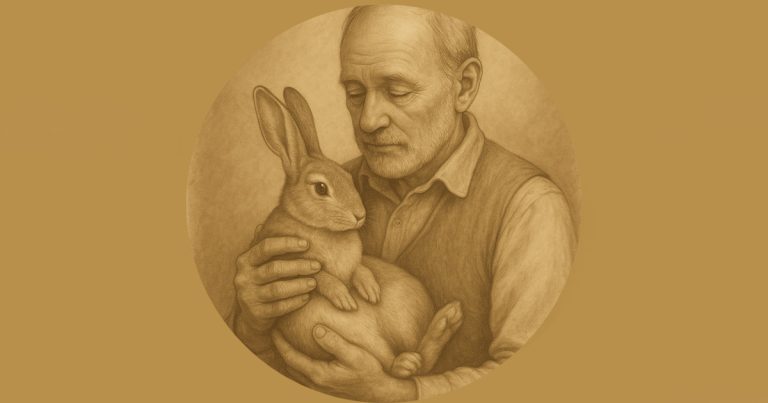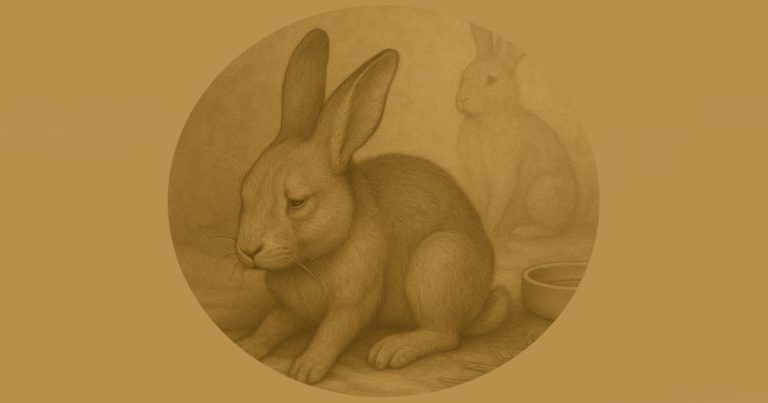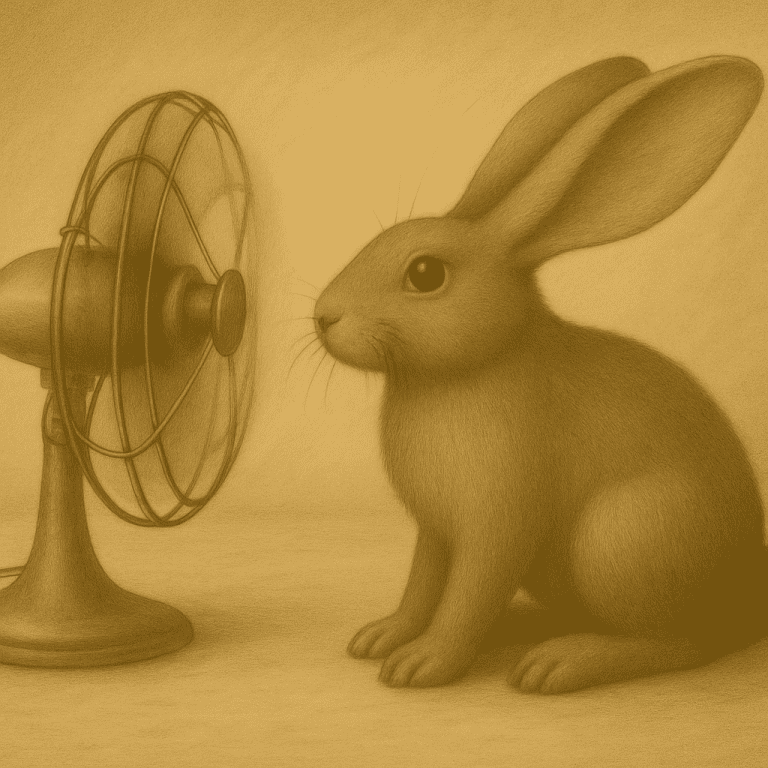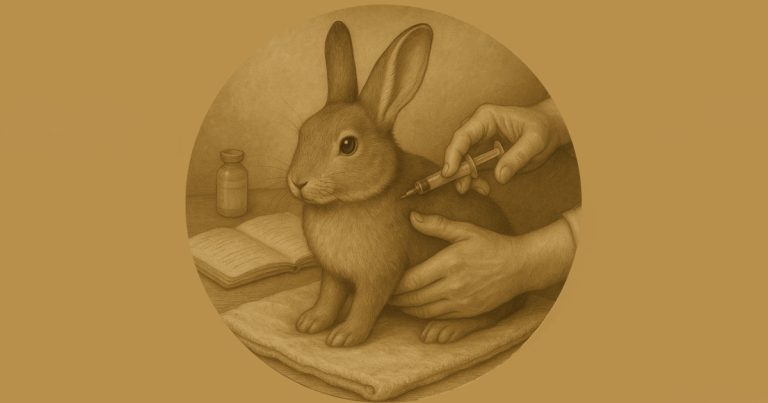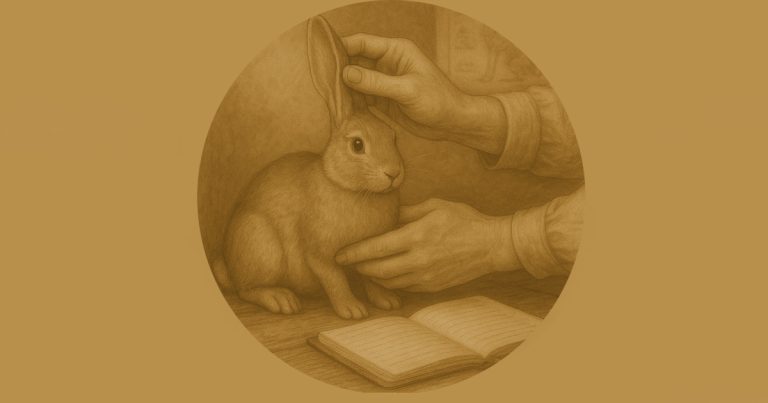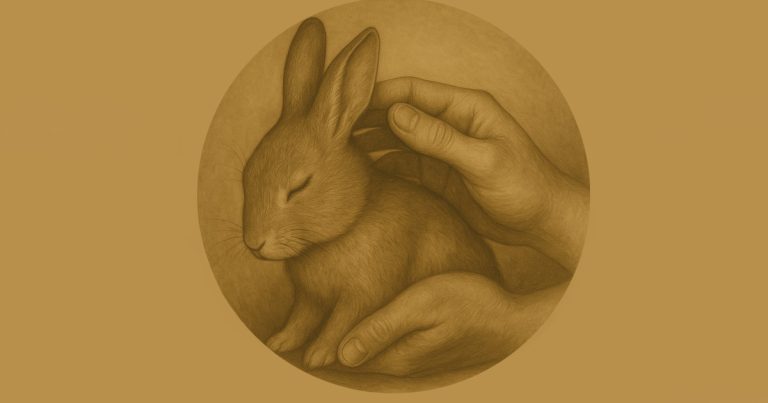Getting Rabbit Nutrition Right
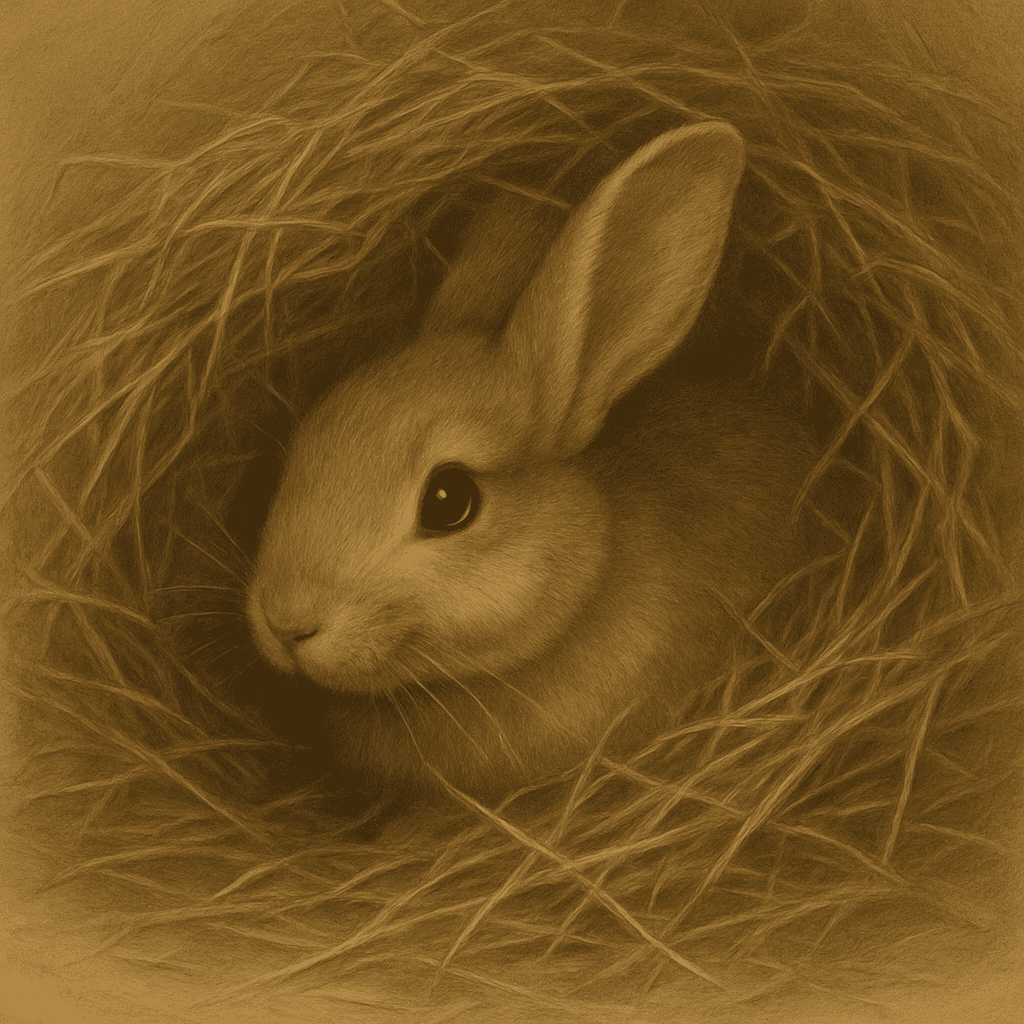
What to Feed a Rabbit: Getting Nutrition Right from the Start
Introduction: Getting Rabbit Nutrition Right
Getting rabbit nutrition right isn’t complicated—but it’s not what most owners think, either. Despite the branding, bowls of colourful pellets and piles of shop-bought veg don’t reflect what a rabbit’s body is designed for. In truth, a rabbit’s diet should mirror one thing above all: the wild.
Rabbits are fibre-processing machines. Their entire digestive system is tuned to break down coarse, low-calorie, high-fibre plant matter. Get that right, and everything else follows—gut health, teeth, behaviour, even lifespan.
At Redbeck, we don’t just feed rabbits. We fuel the system that keeps them alive. Here’s how.
1. Hay: The Cornerstone (80–90% of the Diet)
Hay isn’t just important. It’s essential. It keeps the gut moving, wears down the teeth naturally, and provides the long-strand fibre that no pellet or veg ever can. Without hay, the rabbit digestive system slows—and when that happens, everything else does too.
But let’s be clear: not all hay is created equal.
The Good, the Bad, and the Ugly of Hay
The bad?
Most supermarket hay is a disappointment. Bone-dry, greyed out, and dusty. There’s no sell-by date, so you’ve no idea how old it is or how it’s been stored. The rabbits usually tell you before you notice – they nibble half-heartedly or flat-out ignore it. We avoid it entirely.
The risky?
Farmer’s bales can look like a good deal—and sometimes they are. But we’ve pulled out flip-flops, string, even a dead frog. Great if you know and trust your supplier, but a gamble if you don’t inspect it by hand.
The sweet spot?
We use wrapped meadow hay. When it’s good, it’s unmistakable.
It smells alive. It smells sweet. It feels alive.
And the rabbits go for it—even ignoring pellets and greens to graze all day long. That’s how you know you’ve got the right stuff.
The only downside? It’s not always easy to source. But once you’ve found a good supplier, it’s worth every penny.
What kind?
Good-quality grass hay: Timothy, Meadow, Orchard.
Avoid alfalfa for adults, it’s too rich and calcium-heavy.
How much?
Unlimited. Think hay bar, not hay snack.
Top it up like water, frequently, without hesitation.
What to look for:
Greenish, slightly coarse, fresh-smelling.
No dust. No damp. No mystery contents.
This isn’t just about nutrition.
Good hay feeds the gut, files the teeth, settles the mind and lets a rabbit do what rabbits were born to do: graze, chew, and stay healthy.
“You know when you’ve got the right hay, because the rabbit doesn’t hesitate. They go for that before pellets, before greens, before anything. Ours do, every time.”
2. Pellets: Nutritional Support, Not the Main Course
Pellets have their place. Used wisely, they’re a solid source of vitamins, minerals, and dietary consistencym, especially when hay alone isn’t enough. But they’re not the backbone of a rabbit’s diet. They’re the backup system.
At Redbeck, we don’t dismiss pellets. We respect them, for what they are, and for what they’re not.
Why We Feed Them
We feed pellets to supplement a hay-based diet, not replace it. Most of our adult rabbits get around 20–25g per kg of body weight per day, depending on individual needs. We don’t scoop and guess, we’ve marked out dedicated feeding cups based on weight.
But portion size isn’t everything. Observation is.
- A rabbit in recovery? Needs more.
- One that’s overweight or going off hay? Cut back.
- Nursing doe? Increased intake, split across the day.
Feeding is responsive. You don’t feed the bag. You feed the rabbit.
When Pellets Become Essential
Pellets aren’t just useful, they can be a lifeline.
- Dental issues? Pellets can be soaked into a soft mash
- Toothless rabbits? A vital, chewable fallback
- Syringe feeding? Hay doesn’t fit in a syringe—but soaked pellets do
- Recovery cases? Pellets often form the bridge between critical care and normal feeding
So no, we don’t believe pellets are “bad”.
We believe they should be used intentionally.
Choosing a Quality Pellet
Ignore the branding. Flip the bag.
- Fibre content: 19% or higher, anything less, don’t bother
- No cereals or fillers high on the ingredients list
- No sugar, no dried fruit, no “fun mix”
- Uniform shape: no colours, no pick-and-choose options
Want the deep dive?
👉 Rabbit Pellets: What You Should Know
3. Fresh Greens: A Seasonal Side, Not the Centrepiece
Fresh greens have their place—but it’s not at the top of the food chain.
At Redbeck, greens come after hay and alongside pellets—not instead of them.
We keep it simple. We feed seasonally. We grow a lot of our own.
And most days, our rabbits get a small handful and that’s enough.
Why? Because overfeeding greens causes problems.
Too much moisture, too little fibre, too much disruption.
Our Approach to Greens
- Seasonal first. Whatever’s growing well in the garden, we use.
- Supermarket only when needed—and always washed thoroughly.
- Small, daily handful per rabbit. Not a heap. Not a salad bar.
The Problem with Supermarket Greens
They’re easy, yes. But they come with baggage.
Mass-produced greens are typically grown with high levels of fertilisers and pesticides—especially the cheap ones that look suspiciously perfect.
Organic is a better choice in theory—but expensive in practice.
So we take the middle ground:
- Wash everything properly
- Rotate greens regularly
- Don’t over-rely on one source
- Grow your own if you can—it’s cheaper, fresher, safer
Safe Daily Greens (in rotation):
- Kale
- Spring greens
- Coriander
- Rocket
- Dandelion leaves
- Mint
- Parsley
- Spinach (sparingly – high in oxalates)
Fresh greens support hydration and variety but they’re not the main event.
We offer a handful a day. They eat it happily. Then go back to the hay rack.
And that’s exactly how it should be.
Want to see what a real-life, balanced rabbit diet looks like in action?
👉 View the Redbeck Rabbit Menu
4. Dried Forage: The Smart Way to Supplement Greens
Fresh greens are useful, but they come with limits. Moisture levels, spoilage, cost, and seasonality can all make them tricky to manage, especially in bulk.
That’s why at Redbeck, dried forage is our go-to. It’s clean, fibrous, long-lasting, and far closer to what rabbits would naturally forage in the wild. We use it daily, not as a treat, but as a functional, nutritious part of the diet.
It’s not a filler. It’s not a colourful bag of fluff.
It’s real food and our rabbits go for it.
What We Use and Recommend:
- Plantain (dried)
- Dandelion leaf and root
- Cleavers
- Raspberry and blackberry leaf
- Marigold
- Chamomile
- Nettle
- Willow (leaves and bark)
We either dry our own or buy from trusted, no-nonsense suppliers. The kind that sell forage by its botanical name, not how pretty it looks in a packet.
Why It Works So Well
- Long shelf life – no waste
- Naturally fibrous – great for digestion
- Safe variety – without the risks of overfeeding greens
- Perfect for scattering into hay – encourages natural foraging
It’s ideal during winter, when garden greens are scarce. And frankly, we’d rather offer dried forage than overdo fresh supermarket veg.
Dried forage isn’t a second-best option.
It’s a practical, rabbit-appropriate staple and a smart way to feed with purpose.
5. Fresh Forage: Why We Don’t Use It (Getting Rabbit Nutrition Right)
Forage gets a lot of praise in rabbit feeding circles and rightly so. In the wild, rabbits survive almost entirely on hedgerow plants, tough grasses, and seasonal weeds. It’s what they’re built for.
But there’s a difference between a rabbit on a hillside and one in your care.
At Redbeck, we’ve made the decision not to use fresh-picked forage—and here’s why:
The Risks Outweigh the Benefits Getting Rabbit Nutrition Right
In practice, it’s a gamble.
- Pollutants – Even rural areas aren’t immune. Airborne toxins, vehicle exhaust, and chemical drift from nearby farms can all settle on plants that look clean.
- Parasites and infections – Wild forage can carry parasites, fungal spores, and bacteria. A single contaminated dandelion can introduce coccidia or EC spores into a healthy group.
- Inconsistent availability – Seasonal, unpredictable, and unreliable as a staple—especially for large groups.
- Misidentification – Even experienced foragers can make mistakes, and the cost of one toxic plant isn’t worth the risk.
We know the theory. We’ve done the research. But we’ve also seen the fallout—diarrhoea, bloating, worse.
So we chose the safer path.
What We Do Instead
We use dried forage—and we use it well.
It gives all the chewing, enrichment, and variety without the microbial or chemical risks.
It stores clean. It mixes with hay. And it’s predictable.
Our rabbits browse it the same way they’d browse a bramble patch—only without the gamble.
Feeding rabbits is about more than theory.
It’s about responsibility, risk assessment, and real-world outcomes.
Fresh forage might work for some.
But at Redbeck, we trust what we can see, clean, and control.
6. Treats: What They Are (Getting Rabbit Nutrition Right)
Let’s get something clear: rabbits don’t need treats.
Not in the sugar-coated, pet-shop-snack sense of the word.
But they do benefit from variety, enrichment, and the occasional special nibble—if it’s rooted in natural nutrition, not novelty packaging.
Most shop-bought rabbit treats?
They’re junk. Flavoured, coloured, sugar-loaded fillers that exist to please people, not help rabbits.
The Usual Suspects (And Why We Avoid Them)
- Yoghurt drops – High in sugar, dairy-based, no benefit
- Muesli mix – Causes selective feeding and dental problems
- Dried fruit – Pure sugar bombs
- “Baked” treats – Often full of honey, molasses, cereals, or gelatine
- Apple and carrot (fresh or dried) – Naturally sugary; treat with real caution
They might look innocent. They might say “for rabbits” on the label. But so does muesli—and that’s caused more problems than it’s solved.
So What Is a Treat?
At Redbeck, we define treats as natural, rabbit-safe enrichment.
Not a snack. Not a bribe. Just something small, interesting, and appropriate.
Our go-to options:
- Fresh or dried herbs (basil, mint, parsley, rosemary, thyme, sage)
- A sprig of hawthorn or willow
- A strip of apple or pear bark
- A pinch of dried forage scattered in hay
- The occasional wild flower head (e.g. marigold or chamomile)
- A cube of dried root veg, like parsnip or beetroot (rarely)
That’s it. Nothing processed. Nothing sweetened. Nothing artificial.
How Often?
- Occasionally—not daily
- Small portions—the size of a thumbnail
- Offered for enrichment—not just out of habit
Remember: hay is still the best thing a rabbit can eat. If your “treat” pulls them away from it, it’s not a treat—it’s a problem.
Treats aren’t about guilt or indulgence.
They’re about curiosity, stimulation, and variety—without compromising health.
And if you want to see real joy?
Scatter dried forage in a hay pile and watch a rabbit dig for gold.
“Yes, rabbits love those sugary treats—just like kids love Mars Bars.
But you wouldn’t hand your child a chocolate bar every day.
Loving them means knowing better.”
Further Reading and References:
From Redbeck
- Rabbit Pellets: What You Should Know
- The Rabbit Gastrointestinal Tract
- Redbeck Rabbit Menu
- Rabbit Droppings: What They’re Telling You
Trusted External Sources
Copyright © Redbeck Rabbit Boarding. This article is free to share with credit. No part may be copied, edited, or republished without permission.

